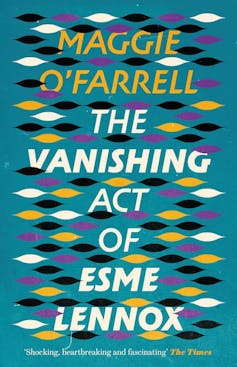Maggie O'Farrell's rebel Esme Lennox refuses to be the 'perfect victim' – even in an asylum
- Written by Amy Walters, PhD candidate, English Literature, Australian National University

“It’s a common turn of phrase to speak of getting lost in a book … a book can also be where one finds oneself,” writes Rebecca Mead.
There are books that seem to comprehend us just as much as we understand them, or even more. There are books that grow with the reader as the reader grows, like a graft to a tree.
After a teacher introduced her to George Eliot, Middlemarch became the book of Mead’s life (eventually resulting in her bibliomemoir, The Road to Middlemarch[1]).
When I was 16, The Vanishing Act of Esme Lennox[2] by British writer Maggie O’Farrell became the book of my life.
Set between the 1930s and the late 20th century, the novel is inspired by the real-life stories[3] of incarcerated women that emerged in the aftermath of the Thatcher government’s policy of deinstitutionalisation.

















